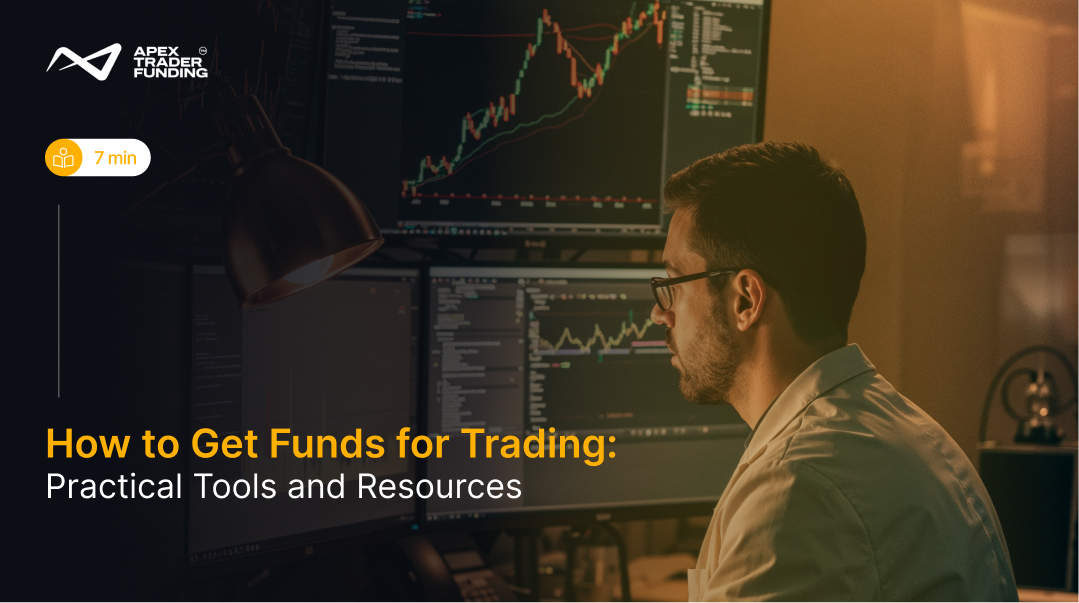
trading-education | 17-10-25
Balancing a full-time job with day trading may feel like a contradiction—but with the right structure, it’s not only possible, it can be highly effective. The Futures market, in particular, offers extended hours, strong liquidity, and consistent opportunities that make it especially suited for people who can’t sit in front of screens all day. This guide outlines how you can integrate day trading into your busy schedule, with Futures at the center of your approach.
1. Match Day Trading to Your Work Schedule
The first challenge is time. With a job, you can’t be active from market open to close, so you must focus on high-opportunity windows.
Futures stand out here because they trade nearly 24 hours a day. This gives you flexibility to trade before work, during breaks, or in the evening. The first hour after the U.S. open (9:30–10:30 AM EST) and the final hour before the close (3:00–4:00 PM EST) often provide the best setups for day traders.
If you’re in another time zone, this flexibility can be an advantage. For example, traders in Asia or Europe can often access U.S. Futures sessions in the evening, fitting naturally around their day jobs.
Other markets, like forex (24/5) and crypto (24/7), can offer flexibility too, but Futures provide a structured environment with set liquidity peaks—making them ideal for balancing a trading routine with employment.
2. Use Technology to Stay Engaged Without Overcommitting
Since your time is limited, technology becomes your best ally. Futures brokers and prop firm platforms like Rithmic or Tradovate make it easier to stay connected to the markets even while at work.
- Pending Orders: Use stop-loss and limit orders to enter and exit positions automatically.
- Mobile Apps: Monitor and adjust Futures trades on-the-go during breaks.
- Price Alerts: Get notified when contracts like the E-mini S&P hit your key levels.
- Automated Strategies (Optional): Pre-program trades so your strategy can execute even while you’re in meetings.
This allows you to keep your career first, while still building consistency as a day trader.
Day trading with a full-time job isn’t about trading more—it’s about trading smarter. A single well-prepared Futures trade can achieve more than hours of chasing the market.
3. Build Discipline and Manage Risk in Futures
Day trading with a full-time job demands more discipline than screen time. Because Futures contracts are highly leveraged, both profits and losses can accumulate quickly, making it essential to follow a structured plan rather than reacting on impulse.
Instead of chasing every opportunity, focus on one or two quality setups that fit within your trading window. Preparing your analysis before or after work ensures you can act decisively when the market is active, without wasting time searching for trades. Risk management is non-negotiable—keep position sizes small, typically risking no more than 1–2% of your account on a single trade. Since you cannot monitor positions all day, strict stop-losses and protective rules become your safety net. This balance of preparation, patience, and risk control is what allows day trading in Futures to complement your job instead of conflicting with it.
4. Prepare Outside Market Hours
Day trading isn’t just what happens during your session; much of the work is done beforehand. Preparing outside of live hours makes your limited trading windows more productive.
- Review Futures charts the night before and mark support/resistance zones.
- Track the economic calendar for events like FOMC announcements or crude oil inventory reports.
- Write down a game plan so that when you sit down at the screen, execution is immediate and stress-free.
Preparation is where full-time professionals gain an edge, making your trading windows efficient rather than reactive.
5. Choose the Right Futures Contracts
Not all Futures contracts are equally suited for part-time day traders. Some are too volatile, while others don’t have enough liquidity outside U.S. hours. Consider starting with:
- E-mini S&P 500 (ES) or Micro E-mini (MES): Deep liquidity, active at open and close.
- Crude Oil (CL/MCL): Strong volatility and opportunities during global sessions.
- Nasdaq (NQ/MNQ): High momentum, ideal for traders who can handle volatility.
- Micro Contracts: Great for smaller risk sizing while learning discipline.
The right contract ensures you’re not overexposed while still accessing meaningful opportunities.
6. Best Markets to Consider When Time is Tight
Here’s a set of options for Day trading with a full-time job:
This makes futures the natural leader for most job-holding traders—balancing structure and flexibility in one market.
7. Grow Slowly and Build Consistency
The fastest way to stall progress is to scale too soon. Treat consistency as your primary goal and position size as a reward for it.
Start small and patient
- Begin with micro Futures (e.g., MES, MNQ, MCL) so losses stay manageable while you refine execution.
- Risk 0.5–1% per trade and cap total daily loss (e.g., 1–2R) to protect your limited trading windows.
Define clear “scale-up” triggers
- Require at least 20–30 trades with positive expectancy before increasing size.
- Use simple rules: e.g., 3 green weeks in a row, no single day >30% of weekly P&L, and max intraday drawdown <1R.
Build a repeatable process
- Journal every trade (entry/exit, rationale, emotions, screenshots) and review weekly.
- Track KPIs: win rate, average R, expectancy, max drawdown, and time-of-day performance (open/close windows).
Increase size gradually
- Move from 1 micro → 2 micros, not straight to minis. Hold the new size for another 20–30 trades before the next bump.
- If you break rules or hit your daily limit, step back a size and rebuild consistency first.
Consistency > intensity
With a full-time job, one high-quality Futures trade during your chosen window beats a day of forced setups. Let consistency compound; sizing will follow.
Consistency is the true currency of Futures trading. When time is limited, discipline—not screen time—is what separates lasting success from short-lived wins.
Final Thoughts
Day trading with a full-time job is not only possible but achievable when you prioritize structure, preparation, and discipline. Futures markets provide the best environment to make this balance work—offering extended hours, strong liquidity, and clear volatility windows.
Ready to turn your trading discipline into opportunity? Explore the Apex Trader Funding website or begin today with a 25K Rithmic account or a 25K Tradovate account to start your Futures trading journey alongside your full-time career.
FAQs
The 2% rule is a risk management guideline that suggests never risking more than 2% of your total account balance on a single trade. For example, if your account is $10,000, the maximum risk per trade would be $200. This rule helps traders preserve capital, survive losing streaks, and build consistency over time—especially important for those balancing day trading with a full-time job.
The 90-90-90 rule is a common saying in trading that highlights how challenging the markets can be. It suggests that 90% of traders lose 90% of their capital within their first 90 days of trading. While not a formal rule, it’s a reminder of the importance of risk management, discipline, and realistic expectations—especially for beginners balancing trading with other commitments like a full-time job.
Avoiding emotional trading comes down to preparation and structure. Start by building a clear trading plan that defines when to enter, exit, and cut losses so decisions aren’t left to impulse. Use stop-loss orders to protect your account, and journal every trade to track both strategy and mindset. Taking regular breaks, limiting screen time, and focusing on one or two quality setups instead of chasing every move can also help. Over time, discipline replaces emotion, leading to more consistent results.
Related Blogs

trading-education | 22-08-25
What is a Funded Trading Account? - Detailed Guide
Trading has traditionally required large amounts of personal capital, leaving many aspiring traders locked out. A funded account changes that...
Read more
trading-education | 23-08-25
How Do Funded Trading Accounts Work?
Many new traders face the same challenge: limited capital and limited experience. Jumping into markets with personal savings often leads...
Read more
trading-education | 25-08-25
How to Get Funds for Trading? - 6 Practical Ways
Starting a trading journey often requires more than knowledge—it requires capital. Yet many aspiring traders face the same challenge: how...
Read more